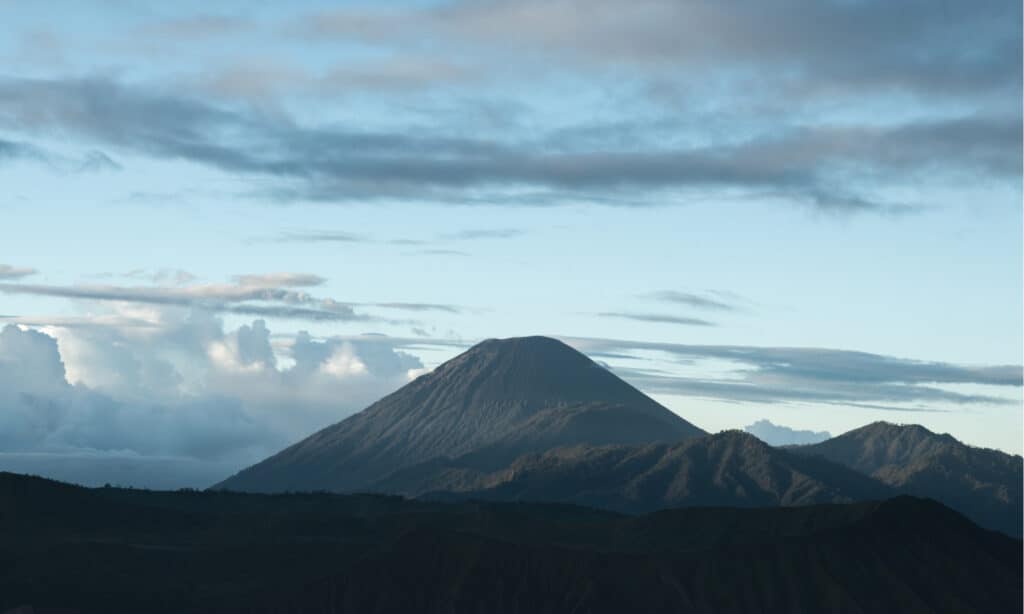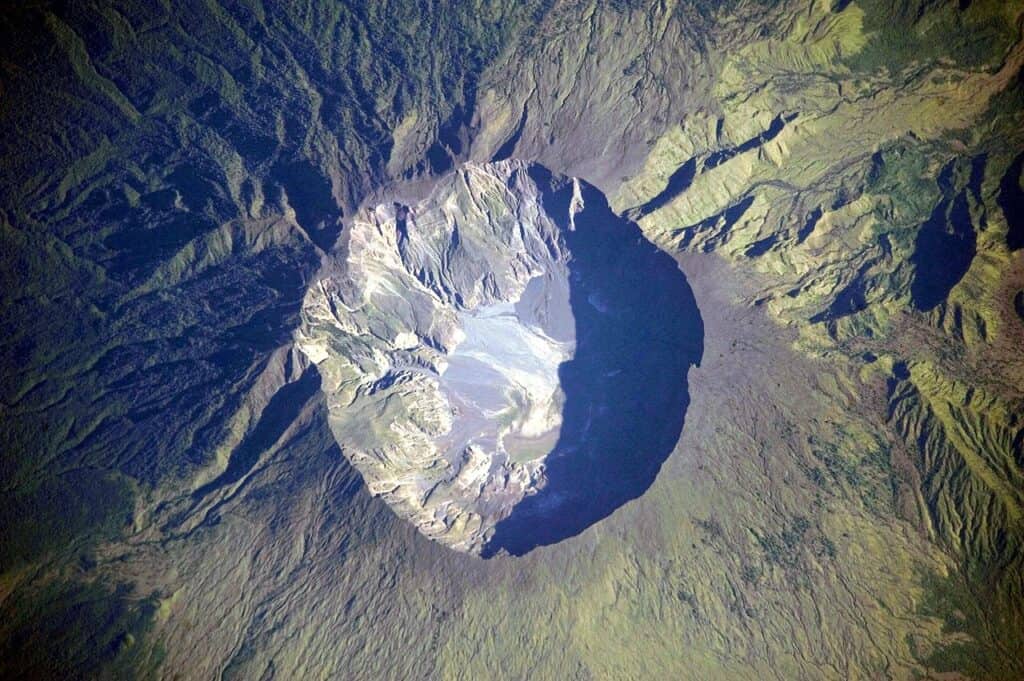For thousands of years now, volcanoes have erupted worldwide, with many continuing to be active for decades. However, most individuals have mental images of volcanoes and eruptions rather than physical pictures since only a few professionals have studied to know how long an eruption lasts.
Triggering tense excitement and terror in most living creatures, this one word “volcano” over time has conjured up flashes of lava flows, ash clouds, heat flows, hot grounds, and mountains rumble in most minds. In most pictures, their attractive firework looks from afar, and steep symmetrical cones sweeping upward in a concave curve do no justice to these natural disasters. They are hell-bent on destroying humanity and properties.
How long do Volcanic eruptions last? What is the impact of volcanoes on our environment?
Is Volcanic Eruption Predictable?

Volcanic eruptions can be predicted.
©Yarygin/Shutterstock.com
Volcano scientists utilize various techniques to track volcanoes, including seismographic detection of earthquakes and tremors, accurate measures of ground deformation, shifts in volcanic gas emissions, and changes in gravity and magnetic fields. Intriguingly, these techniques are not diagnostic as a single entity, but when combined at well-monitored volcanoes, these strategies can yield accurate predictions about volcanic eruptions.
Volcano observatories forecast with extreme caution because eruptions can have devastating consequences on populations, forcing people to flee their homes, farms, and livestock in some situations. On the other hand, inaccurate projections can waste limited resources and cause residents to lose faith in future forecasts. A successful forecast saved thousands of lives at the Pinatubo volcano in 1991.
Are Volcanoes Dangerous When They are Dormant?
Even when a volcano isn’t erupting, it can be dangerous without mincing words. But the level of danger varies based on the volcano’s status. Volcanic eruptions are classified into four distinct sets: active, erupting, dormant, and extinct. So, when they are referred to as an active volcanic eruption, they have erupted in the last 10,000 years. When classified as “erupting,” it tells that they are experiencing a present eruption.
On the other hand, when a volcanic eruption is dormant, it automatically means that they have not erupted in over 10,000 years. However, they are called extinct if they have not erupted in over 10,000 years and are unlikely to erupt again. While extinct volcanoes pose little danger to humans and the environment, others have a high tendency to destroy a heavily populated area within split seconds. Specific precautions should be followed when visiting a volcano, especially if it is active. Even when it isn’t erupting, the risk of an active volcano erupting is always present.
How Long Does Volcano Eruption Last?

Volcanic eruptions have been quite inconsistent.
©fboudrias/Shutterstock.com
Unfortunately, there is no best estimate for how long volcanic eruptions last. Eruptions throughout scientific history have been quite inconsistent. Though some last only a few hours, there is no doubt that others can last more than a day. Some can continue for months, years, or centuries, as in the Pu’u’o’I eruption, the longest and most voluminous lava outpouring from the Kilauea volcano’s east since 1983.
Do Volcanoes Have an Impact On The Climate?

The destructive eruption of the Tambora Volcano decreased world temperatures by 3 degrees Celsius.
©This image was taken by the NASA Expedition 20 crew. / This file is in the public domain in the United States because it was solely created by NASA. NASA copyright policy states that “NASA material is not protected by copyright unless noted”. (See Template:PD-USGov, NASA copyright policy page or JPL Image Use Policy.)
Volcanoes do have an impact on the weather and climate of the earth. Cooler than average temperatures were recorded worldwide following the 1991 eruption of Mount Pinatubo in the Philippines, and brilliant sunsets and sunrises were attributed to this eruption. About 22 million tons of sulfur dioxide in this cloud interacted with water to form sulfuric acid droplets, blocking some sunlight from reaching the earth and reducing temperatures by up to 0.5 degrees Celsius in some areas.
The destructive eruption of the Tambora Volcano in Indonesia in 1815 triggered a similar event and decreased world temperatures by up to 3 degrees Celsius. Even a year after the eruption, summer temperatures in most northern hemispheres were noticeably colder. 1816 was dubbed “the year without a summer” in certain Europe and North American areas.
What Are the Disadvantages Of Volcanic Eruption?
Some of the most deadly phenomena linked with an erupting volcano are hot gas and rock explosions that slide down the slopes. Volcanic activity kills about 540 people every year, the majority within a 10-kilometer radius but up to 170 kilometers away. Volcanic ash and gas clouds may wreak havoc on our health, the environment, and travel. Fine falling ash and chemicals emitted during explosions, particularly carbon dioxide and sulfur dioxide, can cause respiratory issues, which can endanger terrestrial animals like lions, elephants, flying eagles, and lots more.
What Are The Benefits Of Volcanic Eruptions?
Volcanic eruptions and related activities have benefited humanity directly and indirectly over geologic time: Volcanic particles eventually decompose and weather to form some of the world’s most fertile soils, which have yielded bountiful food. Geothermal energy has been created by harnessing the internal heat associated with new volcanic systems. The majority of the world’s metallic minerals, such as copper, gold, silver, lead, and zinc, are connected to magmas discovered deep within the roots of extinct volcanoes.
How to Reduce the Effects of Volcanic Eruptions
Volcanoes are catastrophic events that can be unpredictable. Several recommendations are used to minimize the risk, including:
- Monitoring: Tiltmeters and satellites are used to identify changes in the surface contour of a volcano and monitor the quantity of gas (radon and sulfur) around the volcano, which is frequently produced before volcanic activity. Seismometers and lasers are also used to detect earth movement, which can occur before a volcanic eruption.
- Prediction: Scientists can estimate the possibility of a volcanic eruption and forecast which areas should be prepared for by monitoring the movement of tectonic plates and changes on the volcano’s surface. When it is possible to predict a future eruption, it is possible to begin evacuation plans.
- Protection: One of the most difficult parts of mitigating the effects of a volcanic eruption is protection. It is impossible to guard against lava flows, lahars, and ash fallout. As a result, the only true option to reduce the risks connected with volcanic eruptions is to evacuate residents as soon as possible.
- Planning: Having an evacuation plan is one of the most effective ways of lowering the risk of a volcanic eruption. This includes ensuring that evacuation strategies are in place and emergency accommodation and food supplies are arranged in the shortest possible time.
The photo featured at the top of this post is © fboudrias/Shutterstock.com
FAQs (Frequently Asked Questions)
Did a volcanic eruption cause the largest crater on Earth?
The largest crater on Earth was formed not by volcanic eruption but by impact. The meteorite that formed this crater struck the planet over 2 billion years ago.
Thank you for reading! Have some feedback for us? Contact the AZ Animals editorial team.






